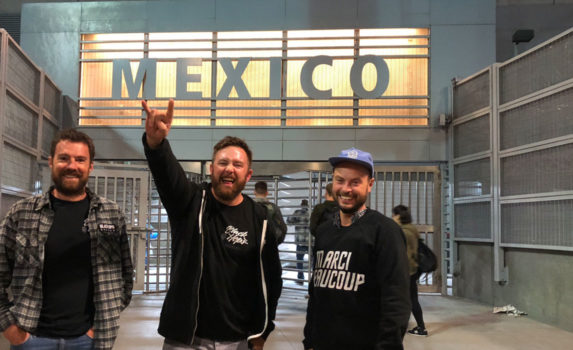In February 2018, me (Dan), Eddie and Govs took off on an 11 day trip to the home of craft beer, the U.S.A. It’s a pivotal time for us at Black Hops as we near capacity at our brewery and plan out where we go from here. We wanted to experience the U.S. Craft Beer scene as we planned our next move.
The trip was a whirlwind 11 day trip where we boarded 10 planes and visited 5 cities in 3 states, ranging from the Craft Beer meccas of San Diego and Portland through to some lesser known places like Lincoln, Nebraska. Every place had something unique, educational and interesting to us.
Brewery sizes
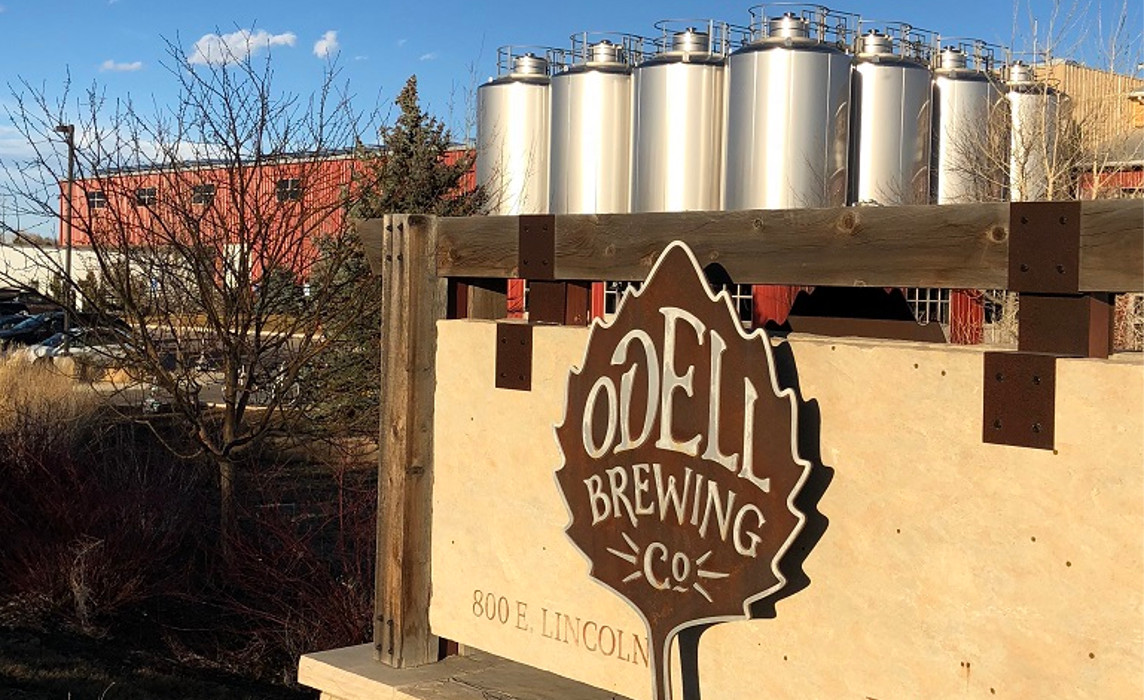
What we’d hoped to discover in the U.S. was a bunch of breweries who had made a jump from something around our size, to something more like the production breweries run by the more well known national craft beer brands in Australia. Our brewing system is a 2,000L brewery with 2,000L and 4,000L tanks. For our next phase we would most likely be looking at a 5,000L brewery with 10,000L tanks, so we were hoping to see a bunch of breweries around this size.
What we saw instead was a lot of breweries that were, for the most part, brew pubs with big restaurants, running a system about half the size of our current system (1,000L was common). The big craft beer brands like Stone, Ballast Pt and New Belgium had 100,000 or 200,000L breweries with 600,000 or 800,000L tanks.
Odell were one of two “Stone & Wood” size breweries in Fort Collins, a town of 120,000 people and 22 breweries.
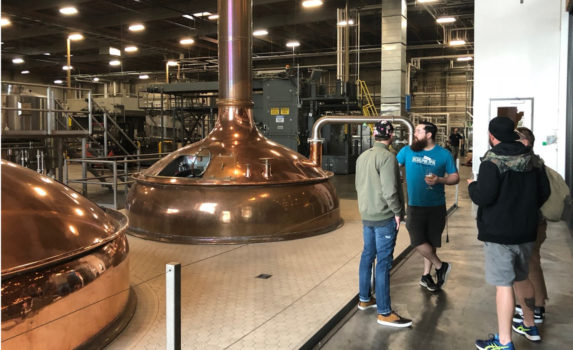
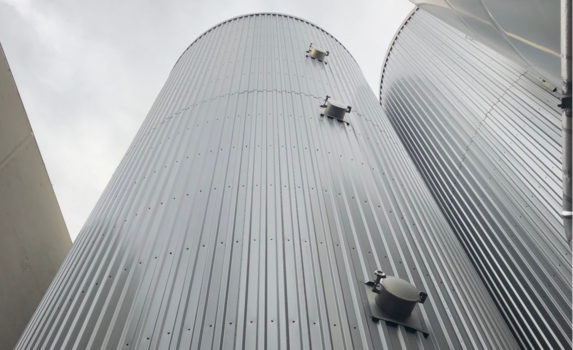
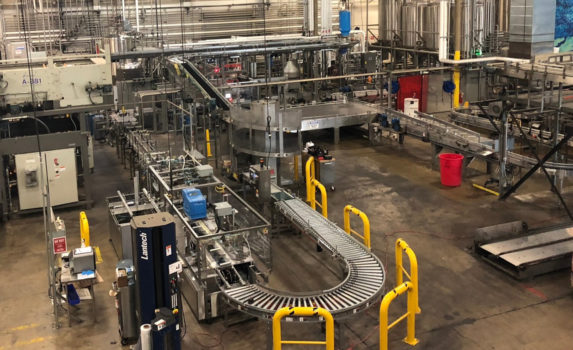
Service
Universally the service in the U.S. was incredible. Anyone who has been to the U.S. will tell you the same thing. And conversely, I’ve often heard from people who come from the U.S. to Australia that they aren’t all that impressed with the service.
America has the tip system which obviously encourages staff to offer good service. But more to the point it encourages the right people to enter the hospitality industry. Bars, restaurants, breweries and everything in between all had great service. But it wasn’t just limited to service staff, it was across the board.
At breweries we were taken on tours by staff who looked after us amazingly well. But even the staff we ran into on the tour would be super friendly and helpful. That was the real eye opener. At American Beer Equipment for example, every staff member we bumped into while on tour, would say hello and introduce themselves and see if they could help with anything.
In the end there’s not a lot that differentiates breweries, and service is a great one to focus on. It’s something we pride ourselves on at Black Hops, particularly at the taproom bar, but I think we could have that service culture run deeper into the business as we grow.
Craft Beer Adoption
The scale of craft beer in the U.S.A is something to behold. Everything in America is bigger than Australia, but combine that with 20-odd years of craft beer growth and a 20%+ market penetration and a huge population and you have a whole new level when it comes to a beer scene.
Craft beer is everywhere! Small local restaurants will have banks of 5 or 10 legit craft taps. Every beer we drank was fresh the whole trip. We noticed they mainly used 20L kegs, which no doubt helps, but I also think the consumer has a good eye for quality and freshness in the USA and you don’t get away with beer that isn’t quality and fresh.
The good old 7-Eleven had a better craft selection than most bottle shops on the Gold Coast, and the beer was cheap. We bought an exceptional double IPA in a 6 pack of 500ml bottles for about $20 USD. We drank craft beer at airports and hockey games. The venues who did specialise in craft beer would have 50 or 100, or even more, taps!
We’d go to breweries in Portland with hundreds of people drinking nothing but hazy IPAs, while at others people were drinking nothing but sours. The scale and the adoption of what in Australia are very niche styles was intense to see.
It was a reminder for me that while Australia has started off very strong when it comes to craft beer, in terms of the quality of the brands and the beers and the venues, it is going to take a very long time to get this level of mainstream adoption.
Taprooms / Restaurants
At Black Hops we more or less only sell beer. We’ve had a few food trucks from time to time but food hasn’t been our focus. We allow people to BYO food from surrounding cafe’s and Uber Eats and we have a few snacks.
But going to the U.S. was a bit of an eye-opener from a food standpoint. Most breweries had restaurants, or at least very large taprooms with food trucks there constantly (or at least often).
This went from the smaller, ‘brewpub’ style venues, through to the huge, household name breweries.
Stone Brewing’s pilot brewery had a massive 1,500 seat restaurant spanning multiple themed rooms, inside and out – in fact it’s the biggest individual restaurant in San Diego!
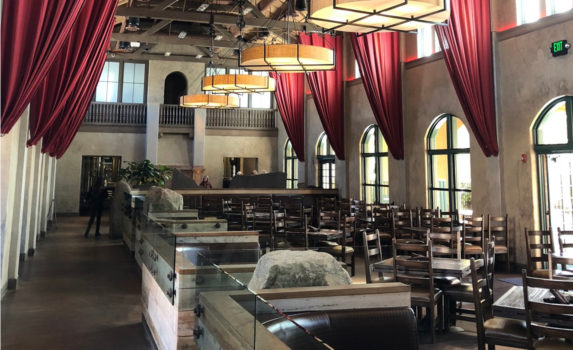
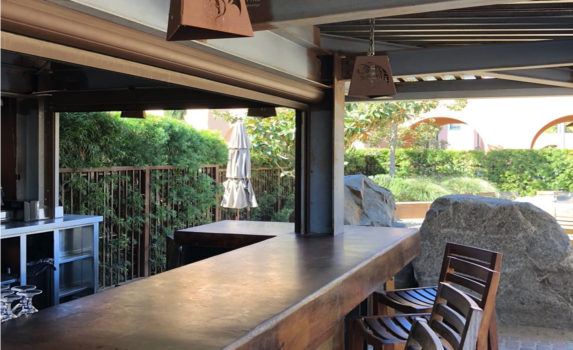
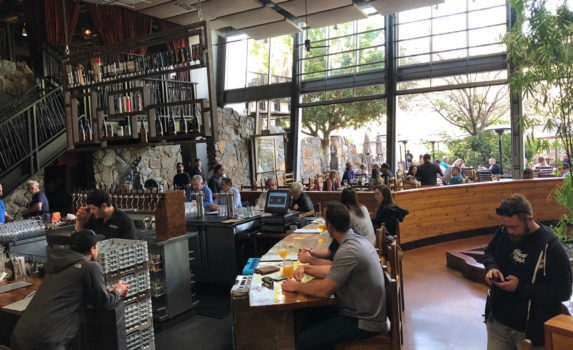
The Haze Craze
NEIPA’s (New England IPA’s), or Hazy’s as they seem to be more commonly called in the States, were everywhere. In 2017 they exploded onto the Australia craft beer scene, but they didn’t really get much further outside of the core fans, and these days you’re lucky to be able to find one in a bottle shop or a tap around the place. But in the U.S. it wasn’t uncommon to find venues that had 5 or more Hazy’s on tap.
Pure Project in San Diego had a bunch of them. They released a new can every fortnight in highly sought after limited runs, often featuring NEIPAs. They are a style that must be consumed fresh, so the limited can concept, delivered directly from the brewery, made sense. In Australia, if you do find them they will often be months old in bottle shops, alongside other beers that are designed to last a lot longer.
We haven’t got a NEIPA in our core range yet, but we have brewed 3 in our limited release batches (now known as our Recon Series), and after visiting the U.S. we will pay close attention to how it trends in Australia. That’s not to say we need to be brewing styles just because they’re currently trendy, but it’s obviously a style that people enjoy, with the potential for a lot of growth in Australia.
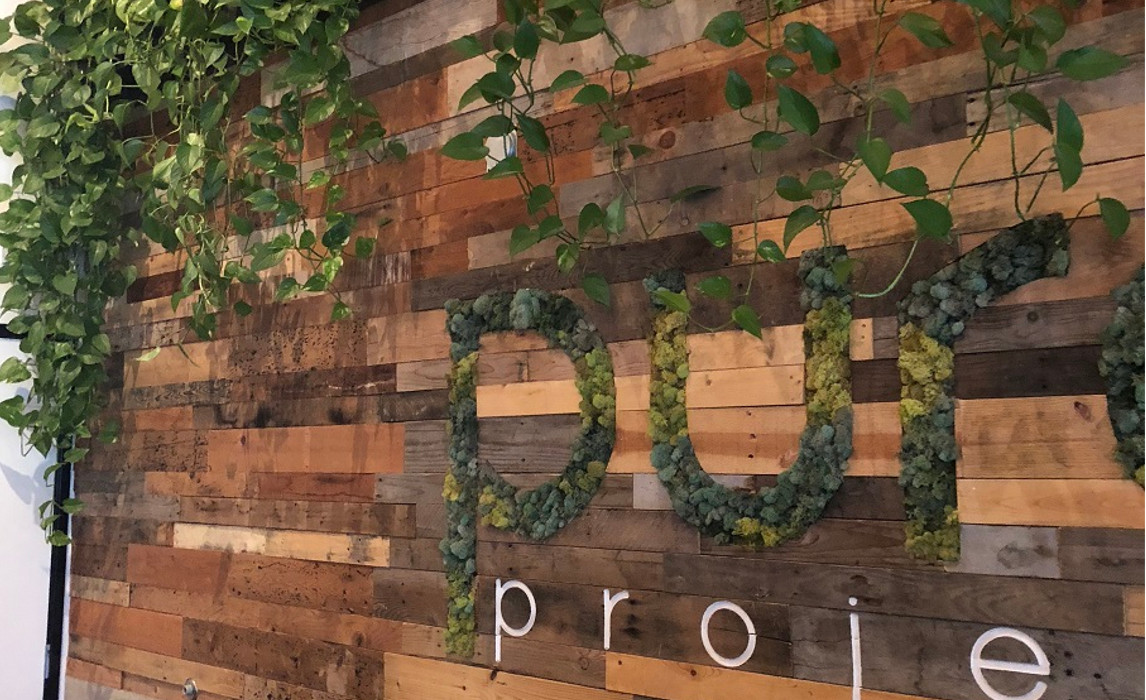
Venue design was legit
Universally venues were treated very seriously, from design, atmosphere, service, product, food and tours. From a design point of view, we saw some seriously epic venues and across the board it was extremely well thought out and well done.
Most venues had strong design themes and intricate detail, even if they weren’t done on a huge budget.
I’ve always been very keen on design and interested in how people approach it. Seeing the scene in the U.S. was a real treat.
We saw huge scale venues where no expense was spared, like both Stone Brewing venues. And larger venues with a really unique look and feel, like Modern Times. But we also saw tiny venues with really simple designs, like Pure Project, that also worked really well.
Here are some random pics and some comments from some of the places we visited.
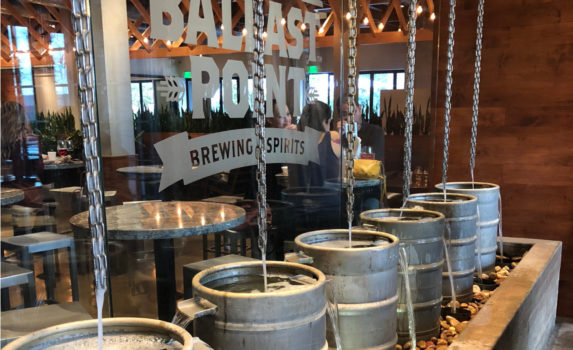
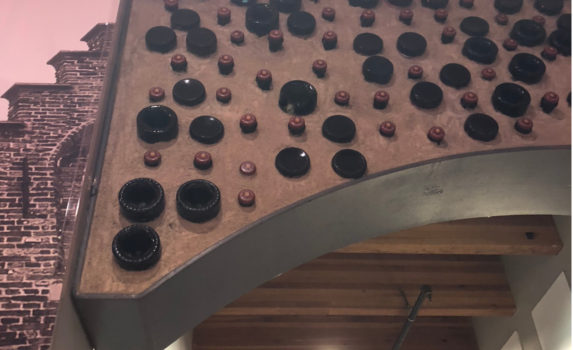
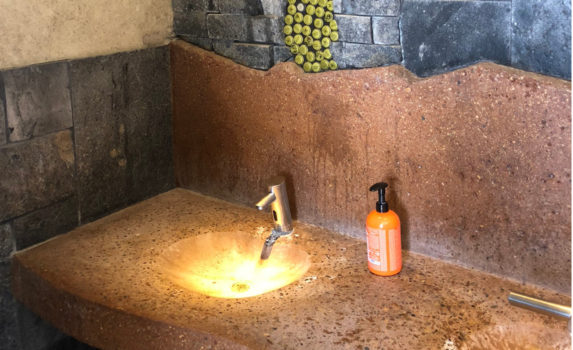
Every brewery has a story
At Black Hops, we’ve been big on telling our unique story since before we even had a brewery. It was great to see that the better venues in the U.S. also were focusing heavily on their story.
From the huge breweries like Ballast Point Brewery in San Diego, and New Belgium Brewery in Fort Collins through to smaller startups like Blue Blood Brewing Co in Lincoln, all had unique stories to tell and all had incorporated these into their tours, their design and their products.
One particularly memorable tour was of the New Belgium Brewery in Fort Collins. It lasted half the day and featured stories from decades ago, when the founders travelled to Belgium searching for beer inspiration.
But it wasn’t just founding stories. The Blue Blood Brewing Co tour featured a cave that robbers used to hide in to escape from police (one of whom was reputably Jesse James). And we drank beers while listening to stories like that of the Stone Arrogant Bastard, which was brewed as a mistake when the brewers doubled all ingredients by accident.

The good breweries had stories woven throughout; within their tours, throughout their venues and even just when drinking the beers themselves. This made the drinking ambience a bit more special and engaging than the average venue.
Coming back we realised that while we had used out story pretty heavily, I think we can still do more on that front.
As you may know, Black Hops prides itself on being ‘the least covert operation in brewing’ when it comes to telling our stories, from our blog posts through to our book on opening a brewery on a budget, Operation Brewery.
To take things to the next level, we now need to consolidate our messages and themes into all of our communications, and also create a centralised place where people can quickly get an overview of who we are, where we came from and what we’re about. So look out soon for ‘The Black Hops Story’. I’d also like staff to be more aware of these stories to tell customers, and to use storytelling a bit more in our products and future plans.
Bulk Merch
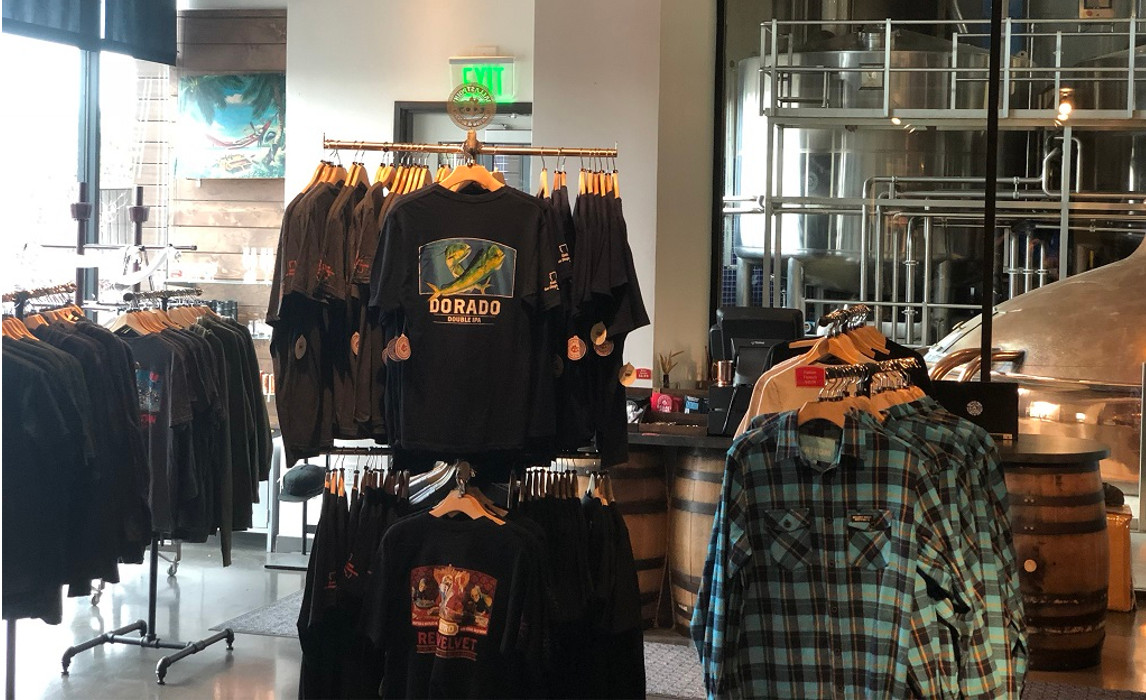
It was great visiting breweries as a tourist, because in Australia we are normally visiting breweries as mates or colleagues of the brewery owners. But in America we were full-blown tourists, so it didn’t take long to realise how often we found ourselves in brewery merch shops.
Up until a few months ago we didn’t really even have anywhere for merch at Black Hops, other than our online store. We’ve recently increased our presence with some shelving in the Taproom bar. But after visiting the U.S. I think we need to do more.
In the U.S. Merch was everywhere. A lot of places had full-on shops, others just huge merch displays at the entrance. Even the more more bar-like, night venues had a heavy merch presence.
And it wasn’t just simply t shirts. We went to venues which offered 5 different types of coolers, 20 or 30 different styles of shirts and flannos, hoodies and jumpers, 5 different styles of hats, 3 or 4 different styles of bottle openers and coolers, printed beer glasses, sunnies, books, diaries..and on it went. The merch shop at Stone Brewery was probably bigger than our entire taproom.
In Australia we have merch shelves inside breweries, in the U.S. we saw bars with a bunch of taps inside the merch shops, that were inside the breweries!
It made me realize that while I think we do a fantastic job at catering to locals, we could definitely capitalise more on tourists. It’s both an opportunity for more revenue, and an opportunity to spread our brand and story around the rest of Australia and the world.
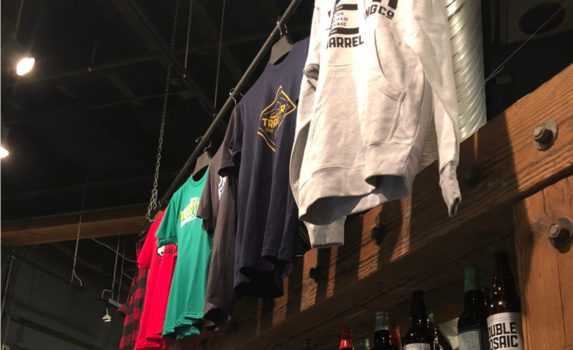
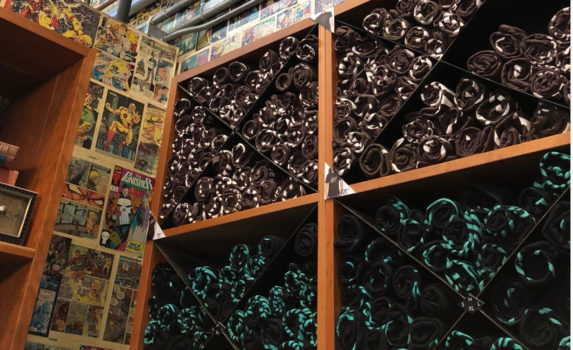
Brewery Tours
Because it was a specific beer trip, we found ourselves on quite a few brewery tours. They’d range from an inpromptu 10 minute look around with a brewer, through to an epic 6 hour experience at New Belgium and everything in between.
It helped us realise how impactful tours can be as a way to tell your story and reinforce your point of difference, as well as delivering a potentially profitable revenue stream.
The tour of the New Belgium Brewery was the highlight. Flynn from Square Keg in Australia introduced us to the New Belgium team before we left and they looked after us like you couldn’t imagine. We got free pre-drinks at the bar at 10am (the 10% Coffee Sour was amazing!) and a 4.5 hour tour of their entire facility, inside and out. The venue itself featured huge staff quarters with table tennis and gym classes, and there were tasters from the barrels and direct from the tanks in the brewery, 2 mid-tour bar stops, a slippery slide, an outdoor section to play in the snow and the opportunity to handpick a takeaway 6 pack free of charge.
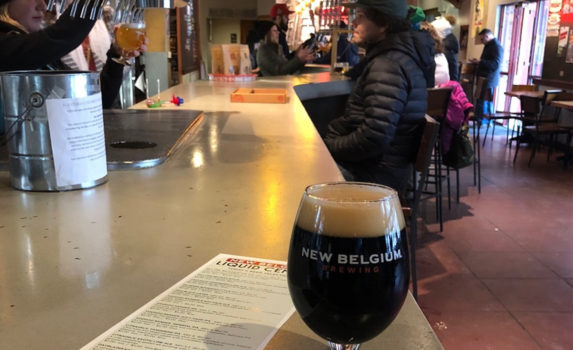
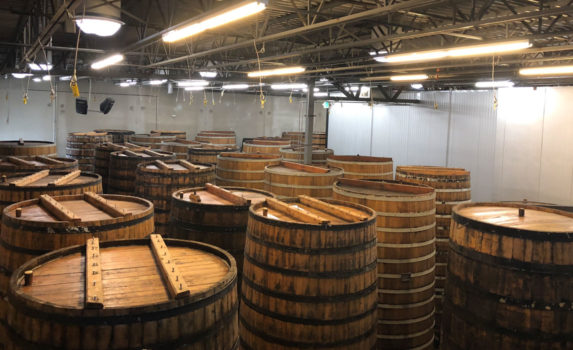
The tour at Blue Blood Brewing featured private access to their underground cave and tunnels. At $10 a head it was a decent revenue stream for them and a memorable point of difference. Stone and Ballast Point Brewing had regular tours running every day.
The New Belgium Brewing tour was another highlight. We arrived to brekky beers, before they spent 6 hours with us, culminating in a snowball fight out the front!
We’ve been running semi-sporadic brewery tours for a while now, with Govs giving the lowdown on the brewing process before moving onto sampling the full tap range via our tasting paddles. They’ve always gone quite well, but from seeing how these best US craft breweries do their tours, we realised we could be doing these a whole lot better, and a whole lot more often.
We picked up some very specific ideas, for example putting our original brewery on display on the tour, having a mid-tour direct pour beer stop, and having key stops for key stories, as well as training up our staff on delivering the tours.
A few more ideas
Here are a few more ‘lightbulb moments’ from the trip that we thought we could incorporate into what we are doing at Black Hops.
- Barrels – We already planned on getting more barrels, but the U.S. trip made me excited about incorporating them into either the taproom somehow or at least as part of the tours. They look great and we saw a lot of ways barrels or parts of barrels were used in the design of taproom elements. After going to the New Belgium brewery, we all got excited about getting our hold on the Foeders (gigantic upright wooden barrels).
- Coffee – We went to a few breweries that sold nitro coffee on tap or even in takeaway cans. For breweries like Modern Times it was a big part of what they do, with onside roasting and coffee tasting as well as takeaway nitro cans. For others it was just a nice option to try something between tasting other big beers.
- Staff rewards – A few breweries had some nice ideas for recognising staff loyalty, it’s something we’d like to look at more at Black Hops.
- Our GABS beer – We had an impromptu visit to Mexico to pick up spices for our GABS beer which came to us on the trip. We can’t say too much now, but stay tuned for our upcoming announcement on that one.
And finally, there was an impromptu trip to Mexico to grab some much needed ingredients for our GABS beer.
But that’s a story for another day.
If you want to chat more about craft beer and business, hit us up in our free Black Hops Ambassadors Group on Facebook.

